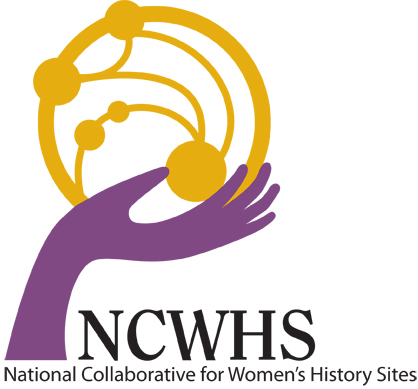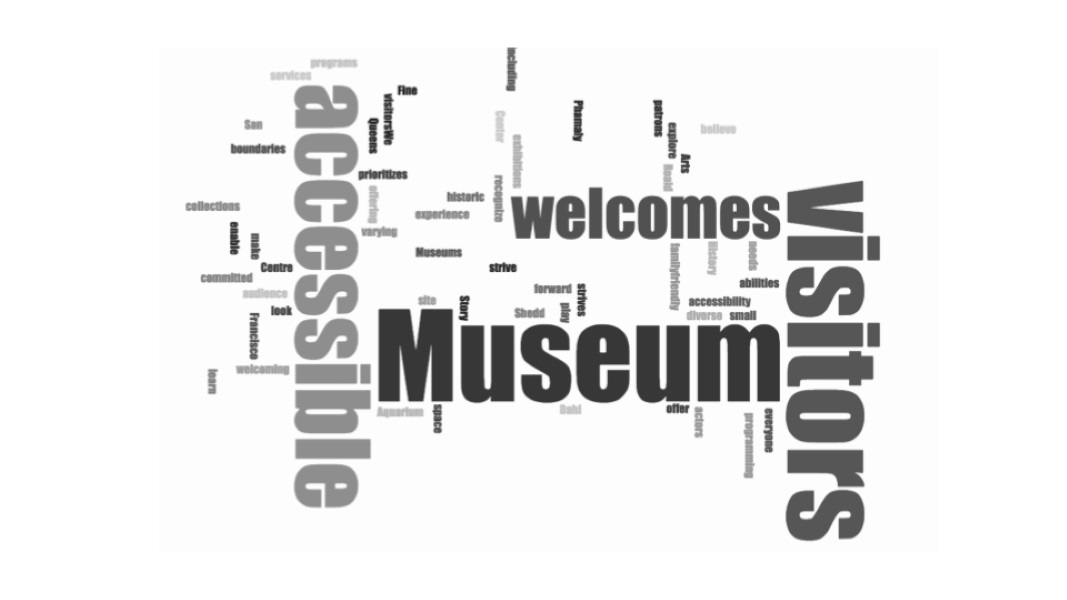The Art of Access: A Practical Guide for Museum Accessibility
By Heather Pressman and Danielle Schulz
What is an accessible museum? Does your site or institution have an accessibility coordinator or program, or is someone at your site or institution undertaking or championing accessibility initiatives on their own? Ideally, all museum content and experiences are accessible to welcome all visitors. The reality is that most are not. So where and how do you begin to make changes? The answer starts with do what you can given the size and resources of your organization—something is always better than nothing. Access is an ongoing process – not “one and done” so start with what you can and then plan for more as time and resources allow.
Community Advisory Group
The best place to start is to create an access advisory group comprised of people from your community who have accessibility needs. This group is essential for any access program as they can serve as a focus group and test new programs. They also serve as advocates within the museum and for their community. They can help problem solve as well – you do not have to be the only one to “fix” everything. One thing to note, members of this group should be compensated in some way, whether that’s a stipend, a membership to the museum, or at the very least, lunch during the meeting. Just like your time, their time is valuable. Also, it’s good to mix this group up from time to time since no one has the same lived experience and no one has the exact same disability experience either.
Training
There is little point to having accessible programs if people do not feel welcome at your museum. Staff training is crucial, this includes paid staff and volunteers. Access touches all aspects of the museum and therefore everyone should be included in various training components. Many advocate groups offer free training, such as your local ADA Center, so start by reaching out to local groups to support training for specific disability populations and situations. Or, reach out to other museums and see if you can split the cost for a joint museum training.
Accessibility Audit
Another easy, low-cost step is to conduct an accessibility audit, completed either in-house or by hiring a consultant. Everyone should be able to fully participate within society, and built environment accessibility plays a crucial role in achieving this goal. When completing an environmental access audit, ask such questions as: How accessible is the approach to the building? Are there accessible doors? Are they wide enough for someone using a mobility device? Can visitors access the museum’s goods and services? Are the pathways in the museum wide enough? Is there accessible seating? Is it an inclusive experience? There are a variety of free audit checklists available to use.
Additionally, you can go beyond physical access and conduct an overview of institutional spaces, programs, and even web design through the lens of access or Universal Design. Include accessibility information on your website in an easy to find location. List programs and accommodations (such as wheelchairs for loan) and links to pre-visit materials, as well as someone to contact if they have questions by creating an access@mymuseum.org email that is forwarded to one or more people who can answer such visitor questions.
Access Materials & Design
Pre-visit materials are useful to a lot of people, but particularly those who are on the autism spectrum or who are neurodiverse. Social stories are short descriptions of a particular situation, event or activity, which include specific information about what to expect in that situation and why. Social stories are visual and written guides describing various social interactions, situations, behaviors, skills or concepts. Designed to help parents prepare their children for situations they may encounter at the museum. Visitors review these before visiting new spaces. Social stories, visual schedules, and sensory maps can be created for little more than the time it takes to produce them.
In-gallery materials are also something that can also be created for fairly little money. These can include tactile reproductions of art and artifacts. Other materials you can include for use in gallery are sensory materials, which can be put in a backpack that can be checked out for free. These sensory packs include things like sound-reducing headphones, sunglasses, fidgets, and personal museum schedules. You can create your own pack or you can purchase them.
Accessible design broadly defined is to make sure that you are designing for physical, cognitive, and social access. Make sure that exhibit labels are written for the average person, not just college graduates. Also make sure that your exhibit labels are accessible in terms of font, color contrast, etc. Have labels available in different formats as well (audio, Braille, multi-lingual, digitally). For labels and captions in different languages, determine which language it would be most helpful to have labels in based on either your visitors or community makeup. Print labels and have them available for checkout at the front desk or in door pockets located near exhibit entrances. When looking at your videos, do they have captioning? Or at the very least, do you have a printed transcript available?
There are several options for adding additional interpretation: ASL tours, verbal description, and touch tours. ASL tours can be ASL led or ASL interpreted. ASL is its own language with its own syntax and grammar, so ASL-led tours are best, but interpreted is better than nothing. Linguabee is a great and easy resource for scheduling ASL interpreters. Touch tours can be scheduled or offered on-demand, depending on your museum using replica, reproduction, contextual or deaccessioned collection items.
Verbal description uses nonvisual language to convey the visual world. It can navigate a visitor through a museum, orient a listener to a work of art, or provide access to the visual aspects of a performance. Verbal description tours can be live-led or pre-recorded. For audio tours, provide a transcript for visitors to use. These additional levels of interpretation remove barriers to engagement for visitors who are Deaf, hard of hearing, low-vision or blind. Click here for an example of verbal description from the Rubin Museum.
Funding
The big question is always, “how am I going to pay for all of this?” All of the things outlined here can be done with little to no budget, but of course the more you can spend on it the better and more accessible your museum will be–but again, doing something is better than nothing! Funding for accessibility initiatives can be found in a lot of different places, so get creative. There are the big grants from places like IMLS and AAM but there are also smaller opportunities at the local level. For example, see if service organizations provide grants, such as the Alzheimer’s Association or similar organizations.
Learn more about the Art of Access at: https://rowman.com/ISBN/9781538130506/The-Art-of-Access-A-Practical-Guide-for-Museum-Accessibility

